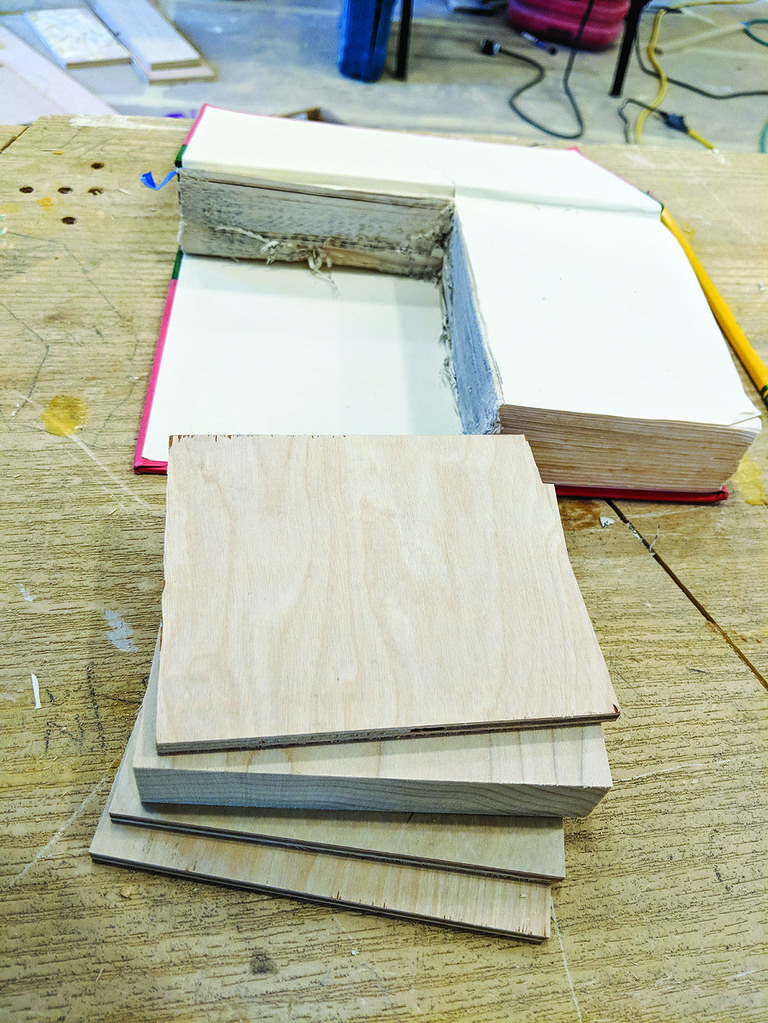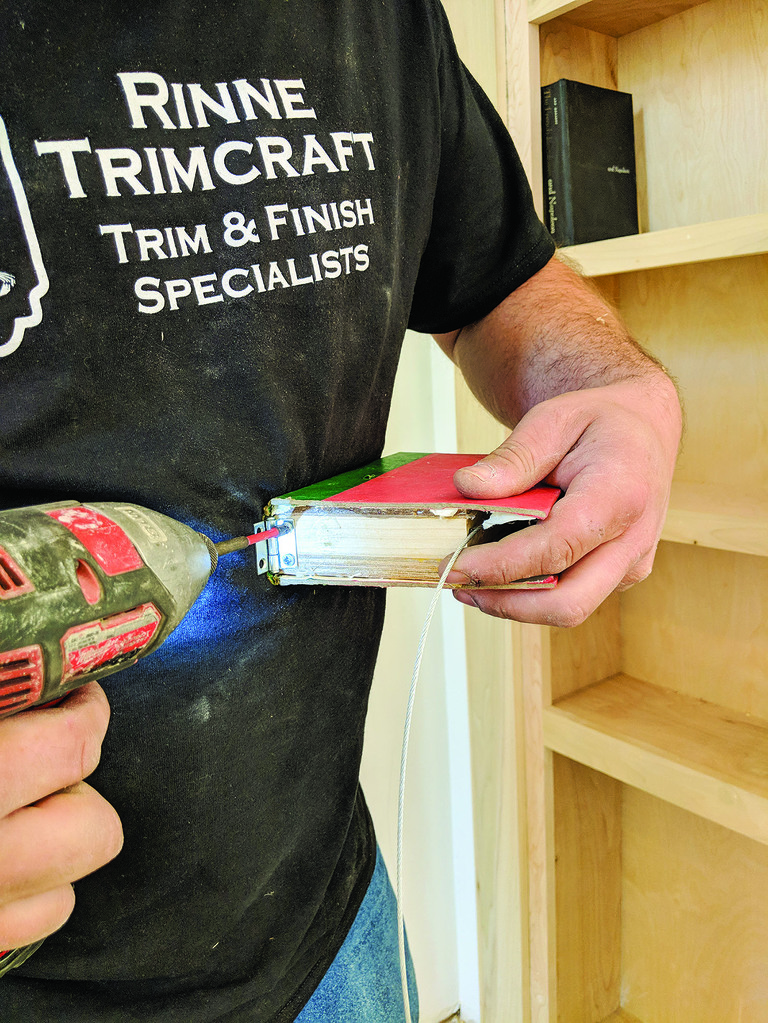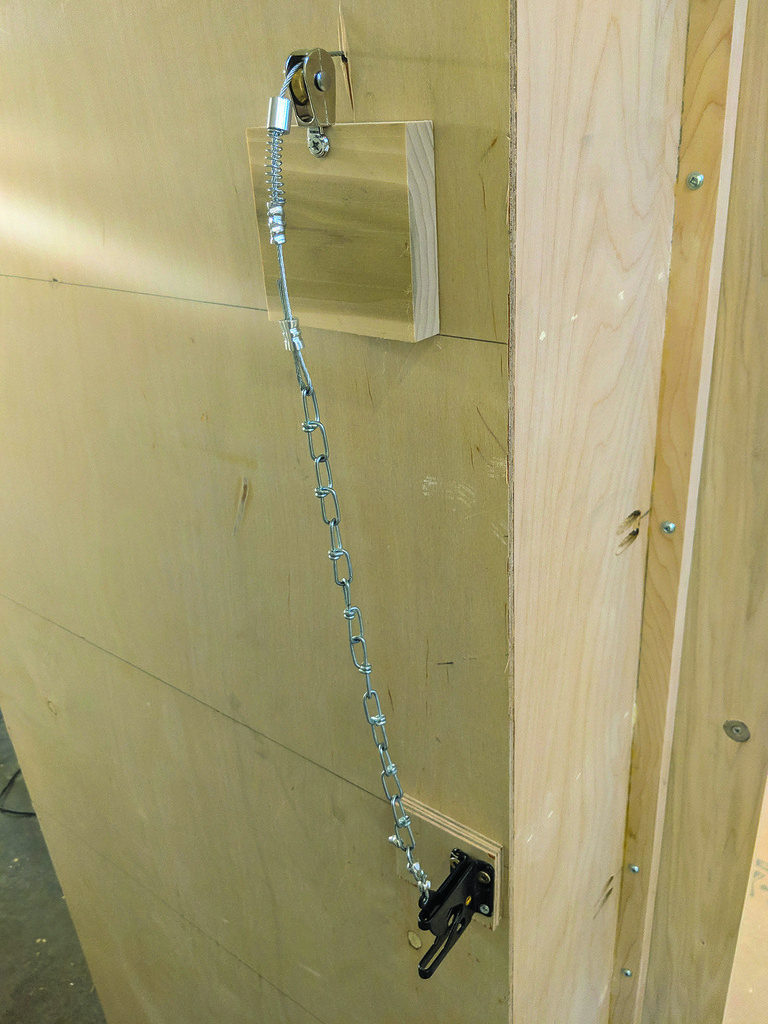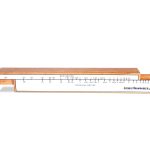We may receive a commission when you use our affiliate links. However, this does not impact our recommendations.
This project is part of the hidden door bookcase.
To me, the book-opener is what puts the magic into a hidden door bookcase. When I ask a client to pick a book to use as the opening mechanism, they will undoubtedly pick a well-known or vintage title, or perhaps a book with a pleasant color scheme. Whatever book you choose, ensuring that it has ample height clearance to fully open hinging outward and that the page thickness is a number that can be divided in quarter inches will save you some headaches later on.
A book with a page thickness of 1 1/2″ is ideal for use as the hidden means of opening the door. This is because you will be cutting out some pages to use solid stock or make a glue blank to fill them back with. This keeps things disguised while creating a sturdy place to mount your hinge and anchor your cable out of sight below.
Prepping the Book
Using a square, make a mark across the pages a little over halfway up. With painters tape, tape all edges of the pages together along with one cover to keep them from flying apart when cut. Leave the other cover free for holding while cutting. With the book next to the blade as a depth gauge and using your adjustable depth stop, set your sliding miter saw to make a cut that is shy of touching the back cover by 10 or so pages. Place a sacrificial board of about 3″ wide between the book and fence so that you can creep up on the line and complete the exit cut on the backside of the book Next, lay the book open with the cover bent towards you to hold onto and make the first cut across the pages. Turn the book 90° and make your second cut about 1/2″ or so from the spine. Then finish both cuts making scoring passes with a utility knife.

Cutting the book on the miter saw.
Make a block to fill the void (minus an inch or so in width to hide hardware) using either solid stock or a combination of solid stock and 1/4″ plywood. Apply PVA glue liberally to both faces and all edges except the bottom and the outside facing edge of the block and clamp the assembly overnight.


Mounting the Book
Predrill a hole in the face and screw the eye hook into your glueblock. Attach the hinge to the bottom of the block as close to the spine of the book as possible. Hold the book in place and carefully tilt it back to mark the screw locations of the hinge on your shelf. Using a hammer and an awl, make a starter hole for them.

Attaching the hinge.
Attach the hinge to the shelf using the #8 5/8″woodscrews. Tilt the book up and drill a hole through the back of the case straight in line with the eyehook.

Attaching the book to the shelf.
Using a set of crimpers, crimp a loop of aircraft cable around the quick link and attach the quick link to the eye hook. Attach the small pulley to a 3/4″ block to give the cable a bit of straight run before turning down. Pull the cable through the back of the case and line up the small pulley with it. Attach the pulley block to the back of the bookcase using PVA and staples, making sure the staples are aligned with a shelf (so they don’t go through the back of the case). Determine where you want the gate latch and mount the receiving portion to the back of the case. Pull the cable taught and crimp a loop the end of which is about 5″ from the pulley. To this loop you will attach the jack chain using another quick link. The chain is then attached to the gate latch release lever. The gate strike is then shimmed back off the casing of the opening until it is in plane with the latch, giving a snug fit when the door is closed.

The latch assembly.
Nathan Rinne is a professional trim carpenter in Missouri. Follow him on Instagram
Here are some supplies and tools we find essential in our everyday work around the shop. We may receive a commission from sales referred by our links; however, we have carefully selected these products for their usefulness and quality.









